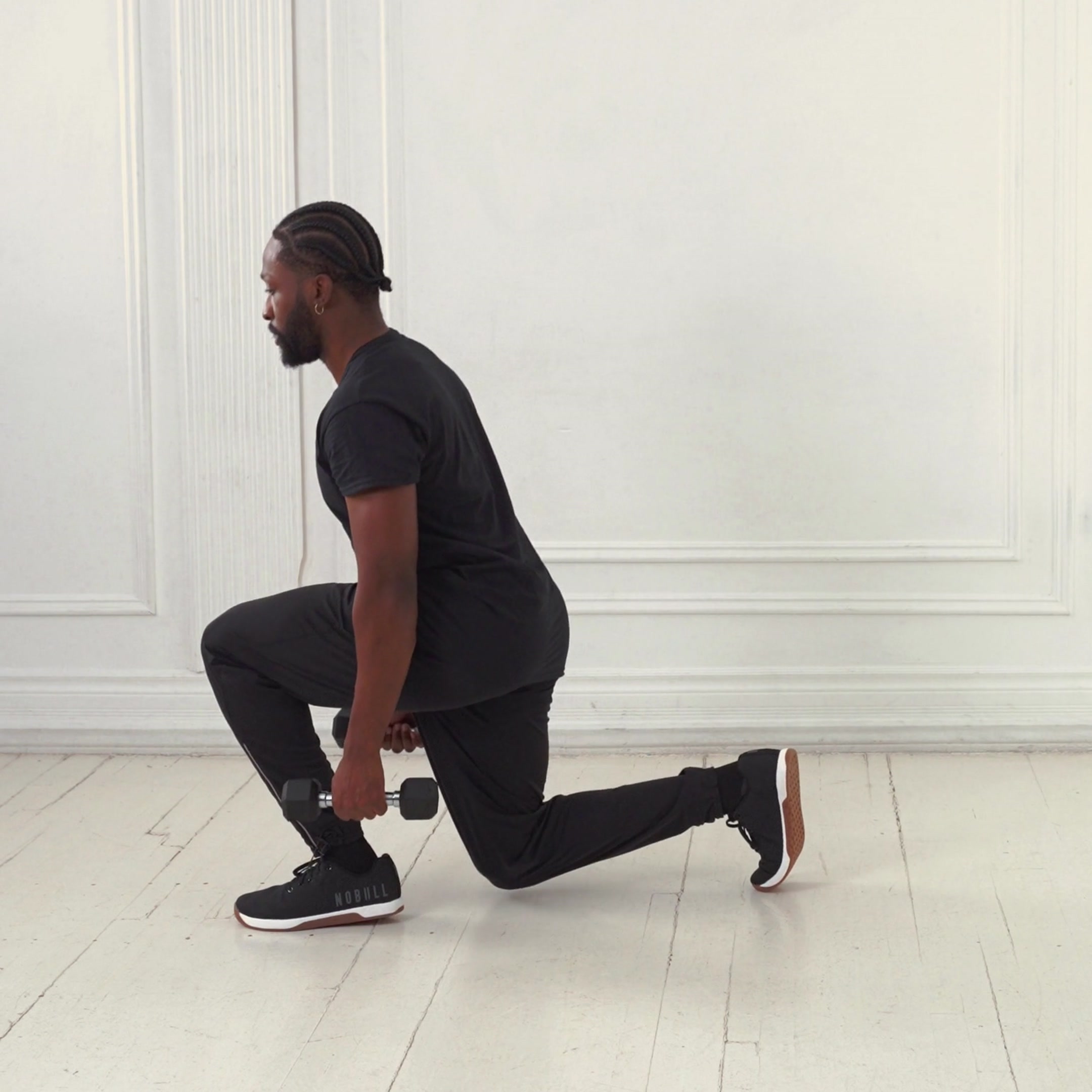Dumbbell Lunge
 Auto Detected
Auto DetectedDumbbell lunge that targets quads, glutes, and hamstrings to build lower-body strength, balance, and functional power; commonly alternated between legs for unilateral training.
About Exercise
Equipment
Dumbbells
Difficulty
3/5 • Beginner
Primary Muscle Groups
Quads, Glutes
Secondary Muscles
Abs, Calves
Popularity Score
9
Goals
Training Style
Setup Requirements
Requires Rack
No
Requires Bench
No
Requires Spotter
No
Space Needed
Medium
Noise Level
Low
Muscle Breakdown
View Muscle MapQuads
9/10Rectus Femoris, Vastus Lateralis, Vastus Medialis
Glutes
8/10Glute Max
Hamstrings
6/10Biceps Femoris, Semitendinosus
Abs
5/10Rectus Abdominis
Calves
4/10Soleus
Programming
Typical Rep Range
8-15 reps
Rest Between Sets
60-90 seconds
How to Perform
Stand with feet hip-width apart, holding a dumbbell in each hand at your sides with palms facing thighs. Engage core and look forward.
- Inhale and step forward with one foot, landing heel first.
- Bend both knees to lower hips until front thigh is parallel to ground and back knee hovers above floor.
- Keep front knee over ankle and torso upright.
- Exhale and push through front heel to extend knees and return to start.
- Bring front foot back to meet rear foot.
- Alternate legs for subsequent reps.
Coaching Tips
Form Cues
- Knees track over toes
- Core tight, chest up
- Push through front heel
- Step in line with hips
- Maintain upright torso
Breathing
Inhale during descent into lunge; exhale as you push back to standing while bracing core.
Tempo
2-0-2
Range of Motion
Lower until front thigh is parallel to floor with front knee at 90 degrees; back knee hovers just off ground without front knee passing toes.
Safety
Safety Notes
- Avoid if acute knee or hip pain present
- Use lighter weights if balance issues
- Consult professional for pre-existing joint conditions
- Maintain neutral spine to prevent back strain
- Start with bodyweight if beginner
Spotting
Spotting not typically required; assist by stabilizing torso if needed for heavy sets, or use safety bars in rack for walking variation.
Common Mistakes
- Knee caving inward
- Leaning forward excessively
- Front knee past toes
- Uneven step length
- Poor balance from rushing
When to Avoid
- Acute knee injuries
- Hip instability
- Ankle sprains
- Pelvic issues
Flexibility Needed
- Adequate ankle dorsiflexion for knee over toe
- Hip flexion mobility for deep lunge
Build Up First
- Master bodyweight lunge form
- Basic balance and coordination
- Hip hinge proficiency
Also known as
DB Lunge, Dumbbell Forward Lunge, Weighted Stepping Lunge
Found this helpful?
Share your thoughts or help us improve this guide.
Similar Exercises

Dumbbell Swing Lunge
Dumbbells
Glutes

Dumbbell Curtsy Lunge
Dumbbells
Glutes

Dumbbell Lateral Lunge

Dumbbells
Quads

Dumbbell Reverse Lunge
Dumbbells
Quads

Dumbbell Walking Lunge

Dumbbells
Quads

Dumbbell Overhead Lunge
Dumbbells
Quads

Dumbbell Contralateral Lunge
Dumbbells
Quads

Dumbbell Ipsilateral Lunge
Dumbbells
Quads

Dumbbell Goblet Reverse Lunge
Dumbbells
Quads

Dumbbell Forward Lunge with Curl
Dumbbells
Quads, Biceps


subscribe to our newsletter
Contact Us
hello@trainfitness.aiFind Us
130 Spadina Avenue, Toronto,
Ontario, M5V 0H4, Canada
©2025 All Rights Reserved
